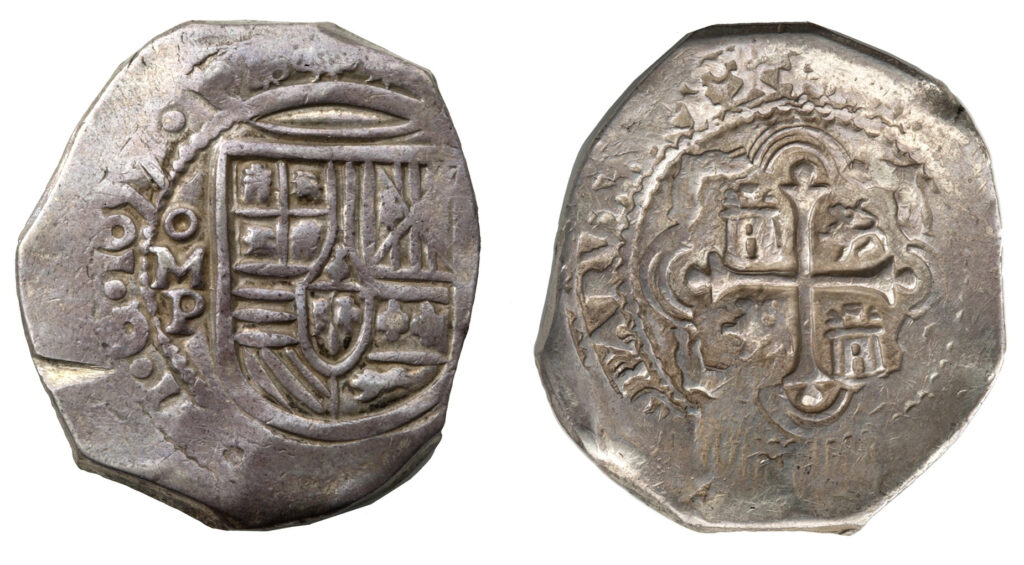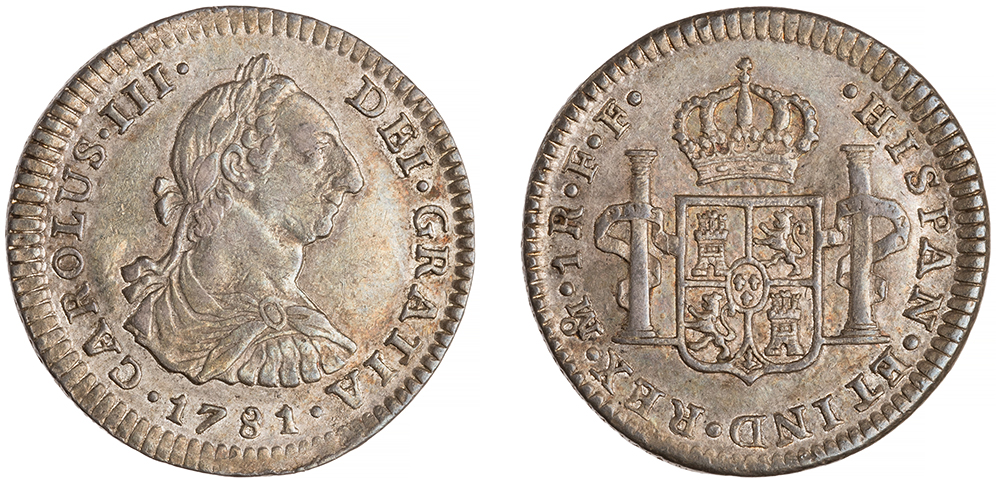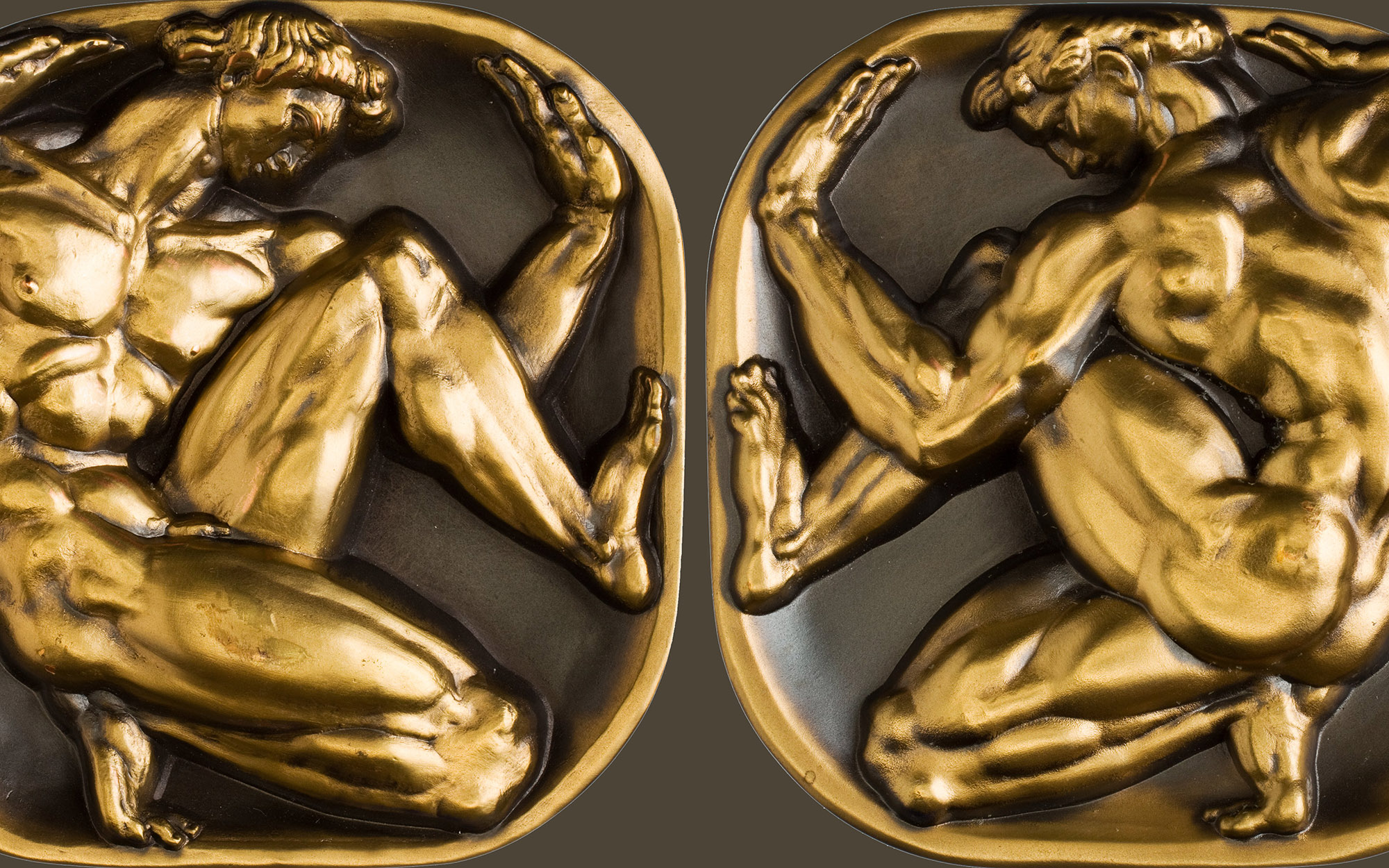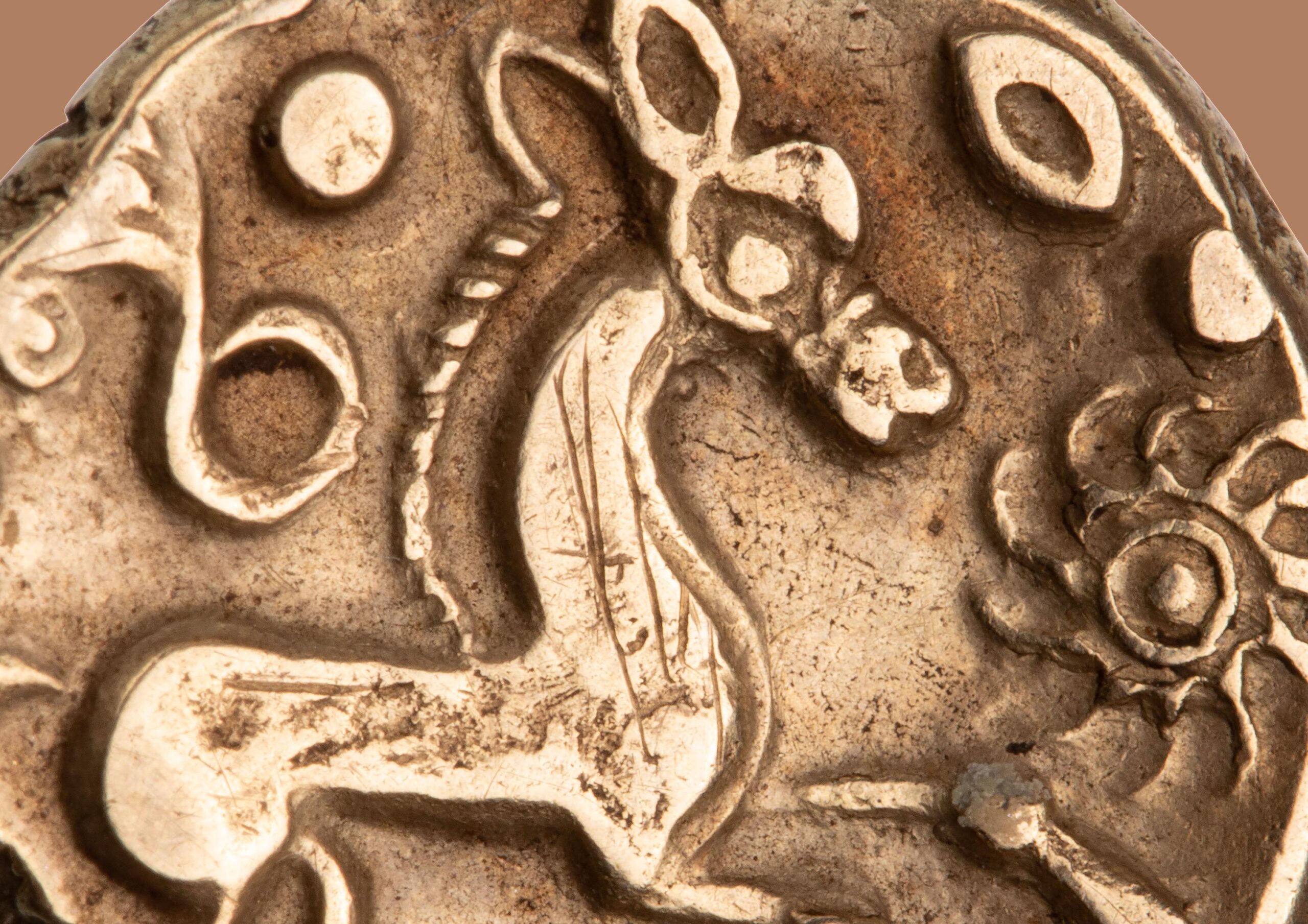Language and the Successful Circulation of Money in the United States
Prior to the adoption of the United States dollar with the Mint Act of 1792, the circulating medium in the young country was a mess. It was a mess during the colonial period and, quite honestly, it was a mess for decades thereafter. Well into the 19th century, a variety of foreign coinage circulated in the United States. With names such as real de a ocho or peso fuerte—names given to them in their place of origin—these coins would not have been able to circulate in the country. A name change was required in order for both consumers and merchants to understand their value.

Through trade and immigration, Spanish-American coinage began to enter the British colonies of North America in the early seventeenth century (Fig. 1). Because it was British leaders and subjects who governed the colonies, these coins were valued into British monetary terms of shillings and pence. For a number of reasons that largely revolved around scarcity and a desire to keep what coins entered the colonies from leaving the colonies, these coins were often given higher values than in England. In the Motherland, a Spanish dollar was evaluated at the rate of 4 shillings 6 pence, its true value in terms of weight and fineness when compared to the coinage of the pound sterling. Meanwhile, an ordinance in New York from 1675 gave these coins the much higher value of 6 shillings and 6 pence, while in the Mid-Atlantic states, they were valued at 5 shillings. Beginning in 1690 Massachusetts, however, and spreading through different colonies throughout the early 18th century, paper currency was introduced, often in large numbers, and upset these values even further. Paper currency quickly overtook the defining quality of the values between dollar and shilling in the colonies, since the paper currency was denominated in shillings and pence, while the dominant hard currency remained to be the Spanish dollar or its fractional pieces.
From this point forward, whenever a value is given in pound, shilling, or pence in North America, they are no longer talking about the British pound sterling, but about individual colonial monetary systems that were independent of both the motherland and of each other. Much like there is a U.S. dollar, a Canadian dollar, a Jamaican dollar, a Hong Kong dollar, and so on, there were separate monetary systems that existed in different regions or colonies. However, these differing systems never actually saw physical coinage struck. Instead, they were all units of account, also known as “ghost coinages.”

Leading up to the American Revolution, the ratios between Spanish dollars and the various colonial systems has settled, no longer heavily affected by inflation (with the exception of South Carolina, which still faced heavy ups-and-downs, and also all of the regions during the Revolution itself, when everything saw inflationary measures.) However, Fig. 2 shows the basic differences between the different shilling systems under normal circumstances, along with their equivalents under the United States decimal system, as these names existed well into the 19th century. It should be noted that, despite using like names albeit with different values, a dollar was still a dollar. Something that was sold for six shillings in Connecticut would be sold for eight shillings in New York. This did not mean that a person actually paid more money for that—a person from New York would not save money if they travelled to Connecticut to purchase the same item—as the conversion between the two sums both equaled one dollar. Rather, this system affected how dollars were divided into fractions, rather than how objects were priced in multiples. When travelling from colony to colony or, later, from state to state, individuals often faced problems when it came to the respective currencies (Fig. 3).

The one-real and half-real coins were, by far, the most prevalent silver coinage in the late colonial period and up to the early 1850s in the United States (Fig. 4). The nation simply did not have the natural reserves to supply its nation with a coinage, as they were either just beginning to be, or yet to be discovered. In fact, most of the silver coinage struck by the U.S. mint up to that point was melted down Spanish-American and other foreign silver coinage. While these coins were still in circulation, different regions had different names for them, largely based on their respective state shilling/pence systems. In 1886, Israel Ward Andrews stated that “The fourpence, the ninepence, the picayune, the shilling, the sixpence, the fip and the levy. These the reader would naturally understand to be seven different coins, whereas the seven were in fact only two, with various names.”[1] Thirty years prior, the Evening Star made a passing comment on these pieces that, in fact, every locality has a separate for the smooth-faced ‘little joker.’”[2] “Smooth-faced” because, by that time, most of these coins were rather worn down after decades of circulation.

The names for these coins were also subject to contractions—shortened versions of a spoken and written form of a word, syllable, or word group, created by the omission of internal letters and sounds. While some claim that contractions first date from this period, they are, in fact, found in Old English and date as far back as the 7th century CE. There is an extensive history of contractions found in monetary usage. Two instances of contractions found in the colloquial speech of New England that relate to their shillings and pence may seem confounding today. In New England, one shilling equaled 1/6 of a dollar, or 16.7¢. However, the one real coin was still worth one-eighth of a dollar, or 12.5¢, which, in New England money, equaled just under nine pence. Rounding up, the one-real coin was known as a ninepence, or ninep’ns when speaking, whereas, as we saw, this coin was known as a York shilling in New York. Similarly, the half real coin was known as a fo-pns hăpny.
Similar tendencies occurred in the Mid-Atlantic region, which includes New Jersey, Pennsylvania, Delaware, and Maryland. Here, the dollar was broken up into 7.5 shillings, or 13.3¢. With the one-real coin still worth 12.5¢, it equated to 11.3 pence in this currency. Therefore, the one-real coin was known as an eleven-penny bit, but was nearly always shortened to a levy. Similarly, the half-real coin was a five-penny bit, and sometimes shortened to a fip’ny bit, or almost always to just a fip.[3] Fips and levies were extremely common terms for consumers to hear throughout the 19th century in this region. As we can see from this arithmetic book from 1850, named The Little Federal Calculator, we can see that this was common knowledge that people were expected to know in order to be proficient in day-to-day reckoning (Fig. 5).

[1] Israel Ward Andrews, “McMaster on Our Early Money,” Magazine of Western History 4, no. 2 (June 1886): 141-52.
[2] “Smooth Fips and Levies,” Evening Star (Washington, DC), August 15, 1856: 3.
[3] Charles A. White, “The Archaic Monetary Terms of the United States,” Smithsonian Miscellaneous Collections 4, no. 1 (1907): 100-1.




